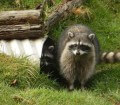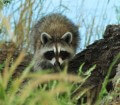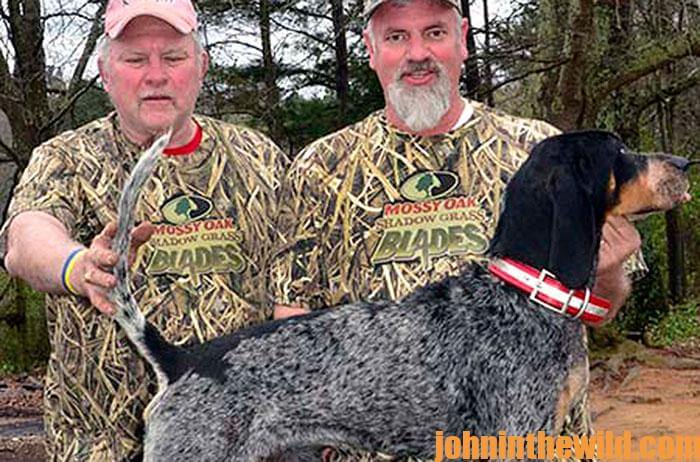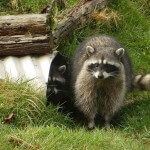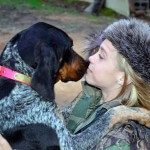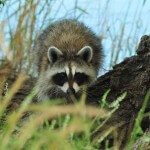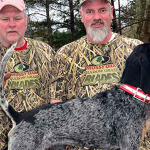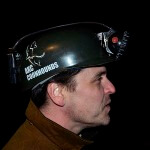John’s Note: Keith Tate (205-527-1862) has been training coon dogs for 15 years, mainly for Dexter Whatley of Kildare Junction in Cass County, Texas. To produce dogs that have the potential to be Grand Nite Champions, the trainer and the owner of the dogs must have the same philosophy about the dogs that are bought and trained. Even though each man performs a different task, they work in harmony like the defensive coordinator and the offensive coordinator on a professional football team. Tate and Whatley share the same mindset of what’s required to produce a Grand Nite Champion coon hound.
John: Dexter, how do you find a dog that you can buy like Shere’s Abbey-Gal?
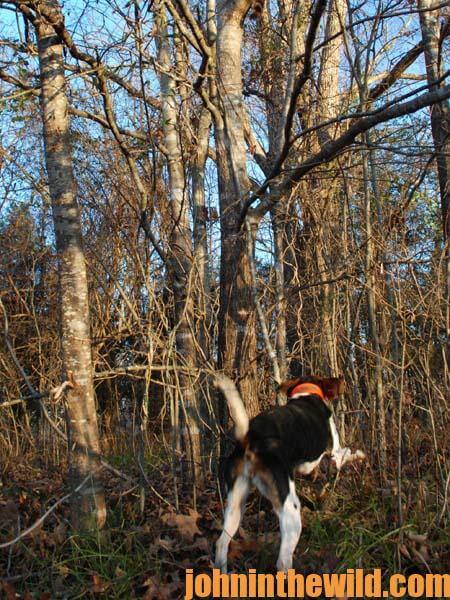 Whatley: You have to do your research. Many times these high-dollar pups – like the ones bred by this female and Smokey River Chief – will be bought by hunters who just want a good coon dog for hunting. We call these coon hunters pleasure hunters. These pleasure hunters are often not into campaigning a dog to become a Grand Nite Champion, and they probably don’t really enjoy breeding and raising pups. Often, you can buy these high-dollar pups from a pleasure hunter for an inexpensive price, and they’ll let you breed to their high-dollar dog. Remember, we’re really not buying the dog as much as we’re buying the bloodline. The real dream of people in the coon dog business is to buy a pup from a breeder, and that pup’s mother is known to have produced several pups that have gone on to become Grand Nite Champions. Pups from a female like that sell for better prices than pups from a female that hasn’t proven that she can produce Grand Nite Champions. Often, the bragging rights of a dog’s pedigree are what determine the price of the pups you raise.
Whatley: You have to do your research. Many times these high-dollar pups – like the ones bred by this female and Smokey River Chief – will be bought by hunters who just want a good coon dog for hunting. We call these coon hunters pleasure hunters. These pleasure hunters are often not into campaigning a dog to become a Grand Nite Champion, and they probably don’t really enjoy breeding and raising pups. Often, you can buy these high-dollar pups from a pleasure hunter for an inexpensive price, and they’ll let you breed to their high-dollar dog. Remember, we’re really not buying the dog as much as we’re buying the bloodline. The real dream of people in the coon dog business is to buy a pup from a breeder, and that pup’s mother is known to have produced several pups that have gone on to become Grand Nite Champions. Pups from a female like that sell for better prices than pups from a female that hasn’t proven that she can produce Grand Nite Champions. Often, the bragging rights of a dog’s pedigree are what determine the price of the pups you raise.
John: Dexter, what do you mean the bragging rights?
Whatley: At most coon-hunting competitions, owners and trainers like to talk about the bloodlines of the dogs they have at that competition. If the dog you’re competing with has several Nite Champions and Grand Nite Champions in her bloodline, this makes her a point of pride and sets her up as a dog that other owners and trainers will be watching in the competition. If that female wins the competition or places in the first five of a big hunt, then the demand for her pups will skyrocket. Competition hunters, like racehorse owners, want to breed the best animals they can produce. Racehorse owners love to breed their stallions to a female that has a Kentucky Derby winner or a Triple Crown winner in her bloodline, hoping that the female will produce a colt that’s as fast as or faster than the mother or the sire. The same is true when you’re breeding coon hounds. You want to produce pups that have the potential for greatness.
Phillips: Keith, how long does producing a Grand Nite Champion coon dog take?
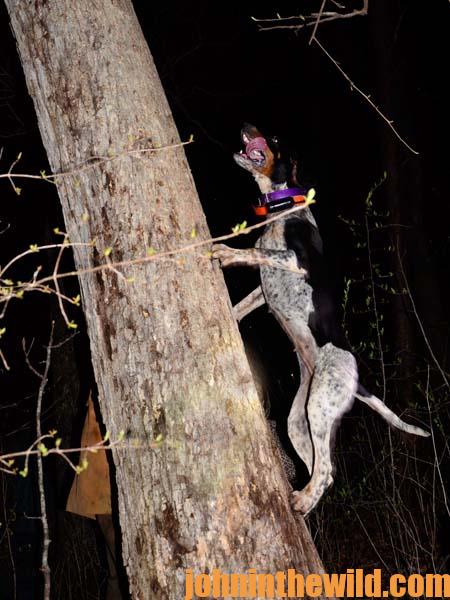 Tate: I’ve had some dogs that I’ve trained and worked with that never have become Grand Nite Champions. They were good dogs. But because of the luck of the draw or how things worked out on the hunts, these dogs never were able to get their five first-place wins in Nite Champion hunts. I’ve had other dogs that I just knew would become Grand Nite Champions that perhaps crossed the road and got hit by cars. You can have a potential Grand Nite Champion coon dog, and circumstances may prevent that hound from becoming a Grand Nite Champion. Reaching the height of Grand Nite Champion isn’t easy for a trainer, the owner or the dog. That’s why the bloodlines from a Grand Nite Champion are so valuable.
Tate: I’ve had some dogs that I’ve trained and worked with that never have become Grand Nite Champions. They were good dogs. But because of the luck of the draw or how things worked out on the hunts, these dogs never were able to get their five first-place wins in Nite Champion hunts. I’ve had other dogs that I just knew would become Grand Nite Champions that perhaps crossed the road and got hit by cars. You can have a potential Grand Nite Champion coon dog, and circumstances may prevent that hound from becoming a Grand Nite Champion. Reaching the height of Grand Nite Champion isn’t easy for a trainer, the owner or the dog. That’s why the bloodlines from a Grand Nite Champion are so valuable.
Whatley: I had one dog that I was pretty certain had the potential to be a Grand Nite Champion, but that dog was kind of like me. He was a little bit afflicted with ADD (Attention Deficit Disorder). He might be doing well on a hunt and had the potential to win the hunt, but if a deer jumped right up in front of him, or if he ran over a possum, he’d get distracted and start running that off-game. This dog just liked to chase animals. I wouldn’t give up on the dog, because I knew he had the potential to be a Grand Nite Champion, even though he was somewhat ADD. I took him to Bluetick Days (www.bluetickbreedersofamerica.com), which were held in Montgomery, Alabama, that year. I had to drive 9 hours from my home in Kildare Junction in Cass County, Texas, to get to Montgomery. During that 9-hour drive, this dog was in the trailer wanting to go hunting. I came in fourth place with that dog Friday and Saturday nights, and Friday night my ADD dog was the high-scoring male dog for the hunt. The 1986, 1987 and 1988 Bluetick of the Year was participating in this hunt. I had made a Nite Champion out of my ADD dog in 6 weeks by hunting in five states. I thought to myself. “This is as high as this dog can go, but I’m going to continue to hunt him in some competitions to see if I can’t make a Grand Nite Champion out of him.” I’ll be darned if that dog didn’t earn his Grand Nite Championship. Most of my coon-hunting buddies told me to either put that dog down or give him away, because he never would make a Grand Nite Champion. If I had listened to my buddies, I would have given away a dog that sired a pup that’s now in the Coon Dog Hall of Fame. So, many times your gut feeling (intuitive sense) about a dog will serve you better than the advice given by other well-respected coon hunters.
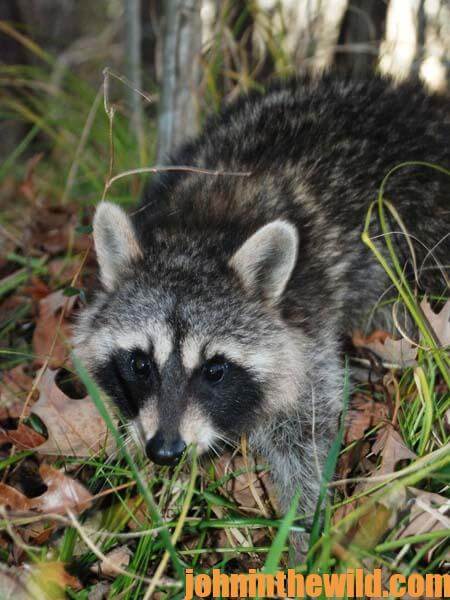 Click here to find Kindle and print books by John E. Phillips on kinds of outdoor subjects.
Click here to find Kindle and print books by John E. Phillips on kinds of outdoor subjects.

